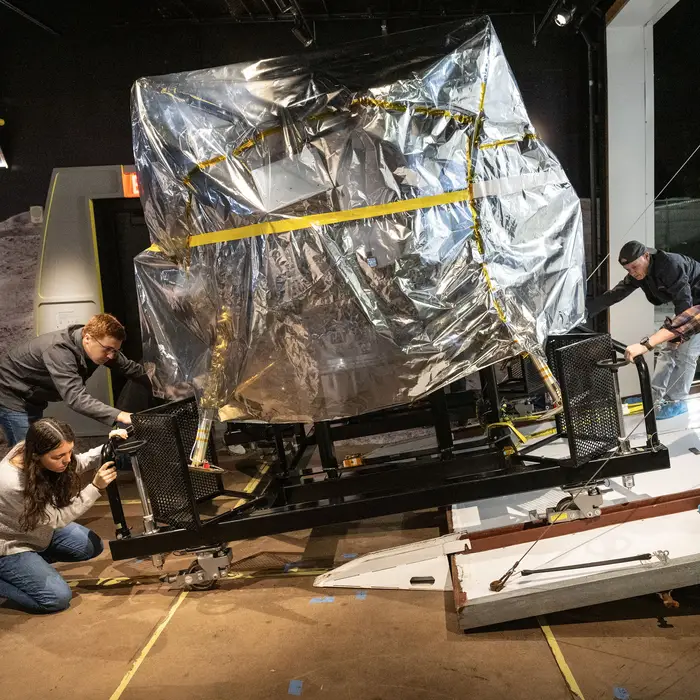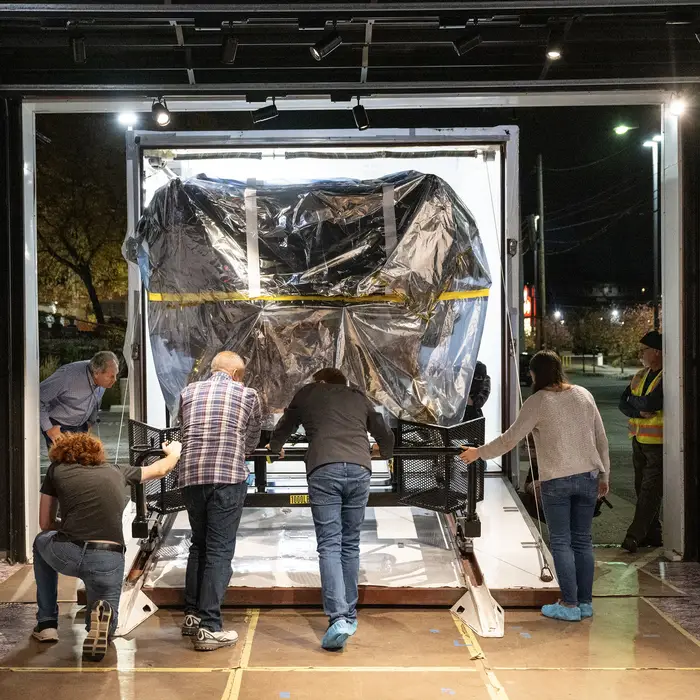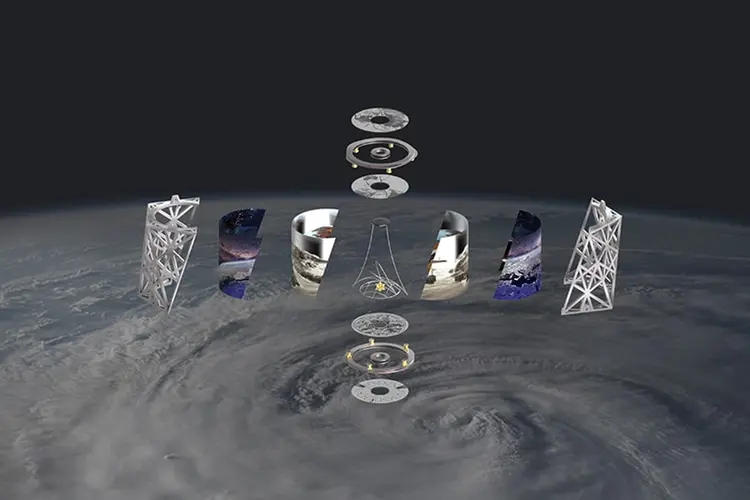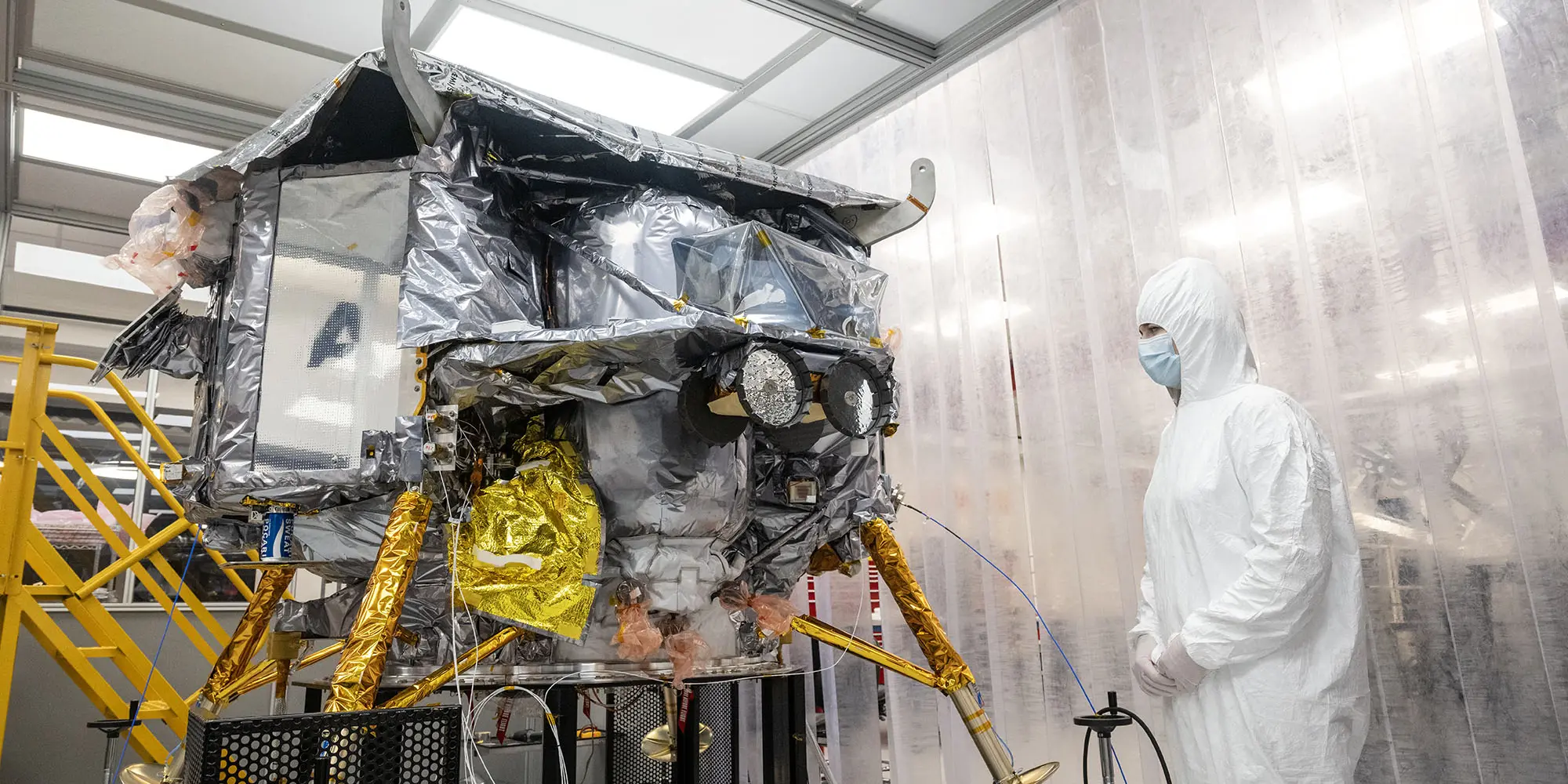
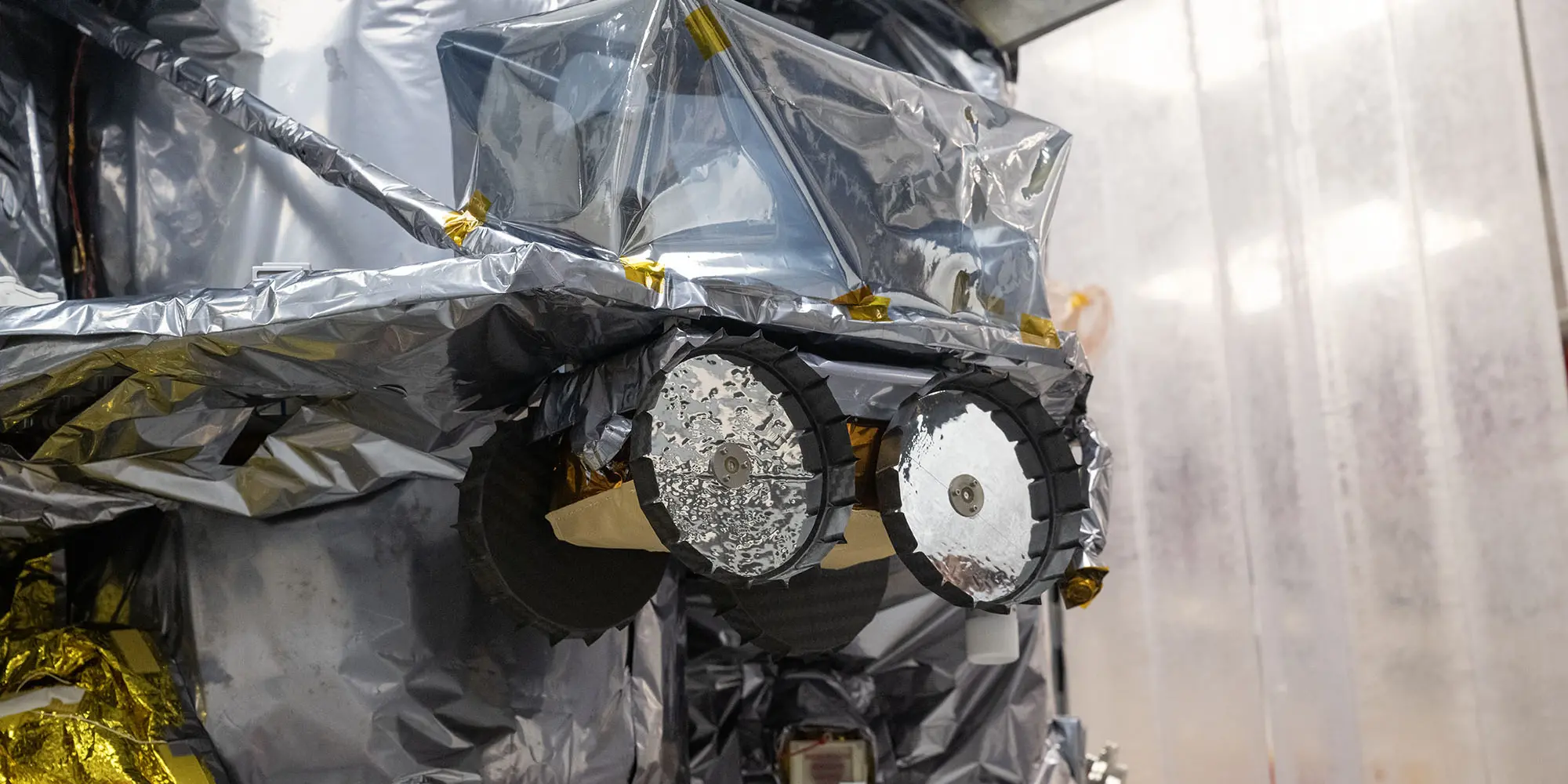
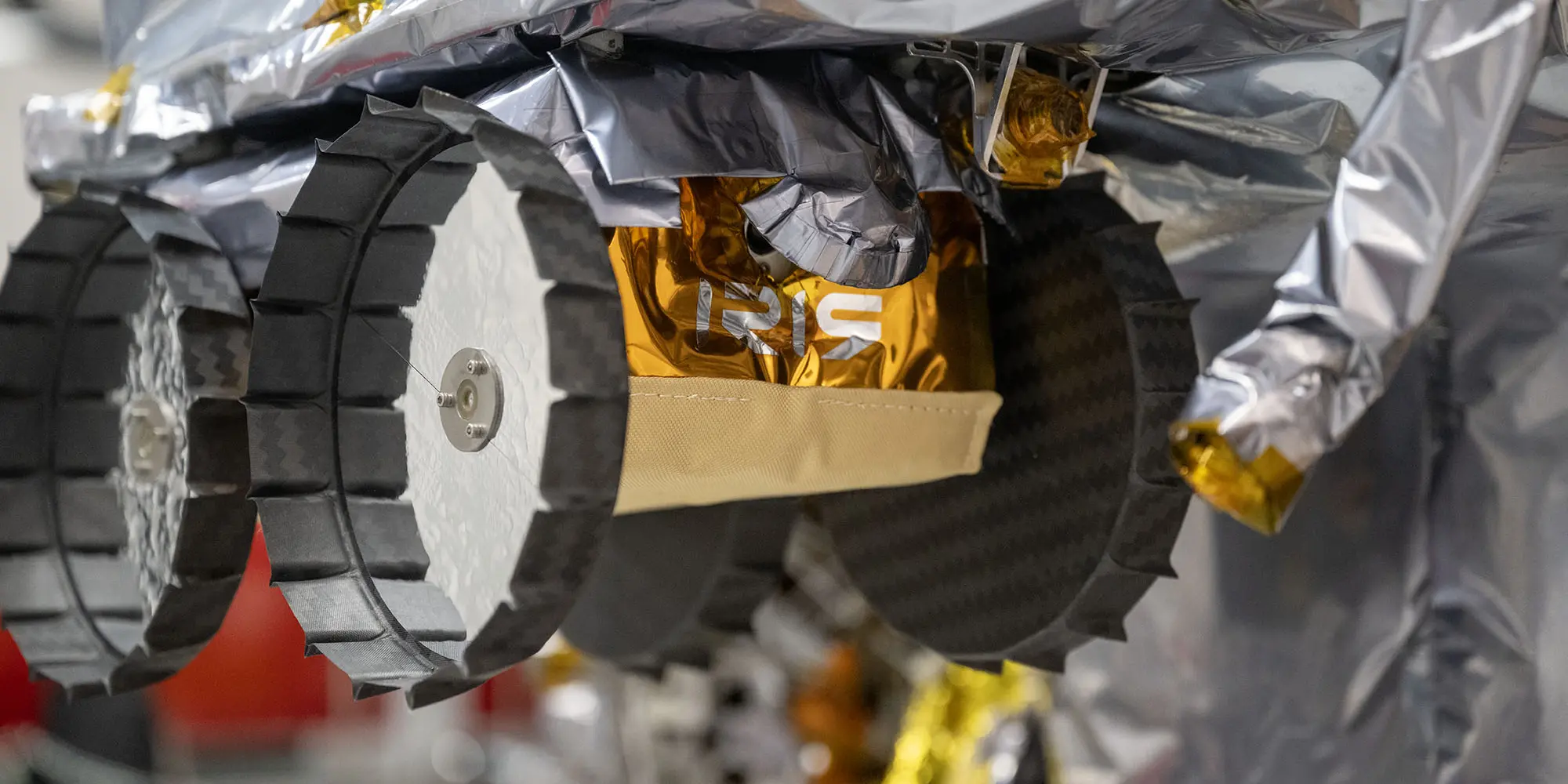
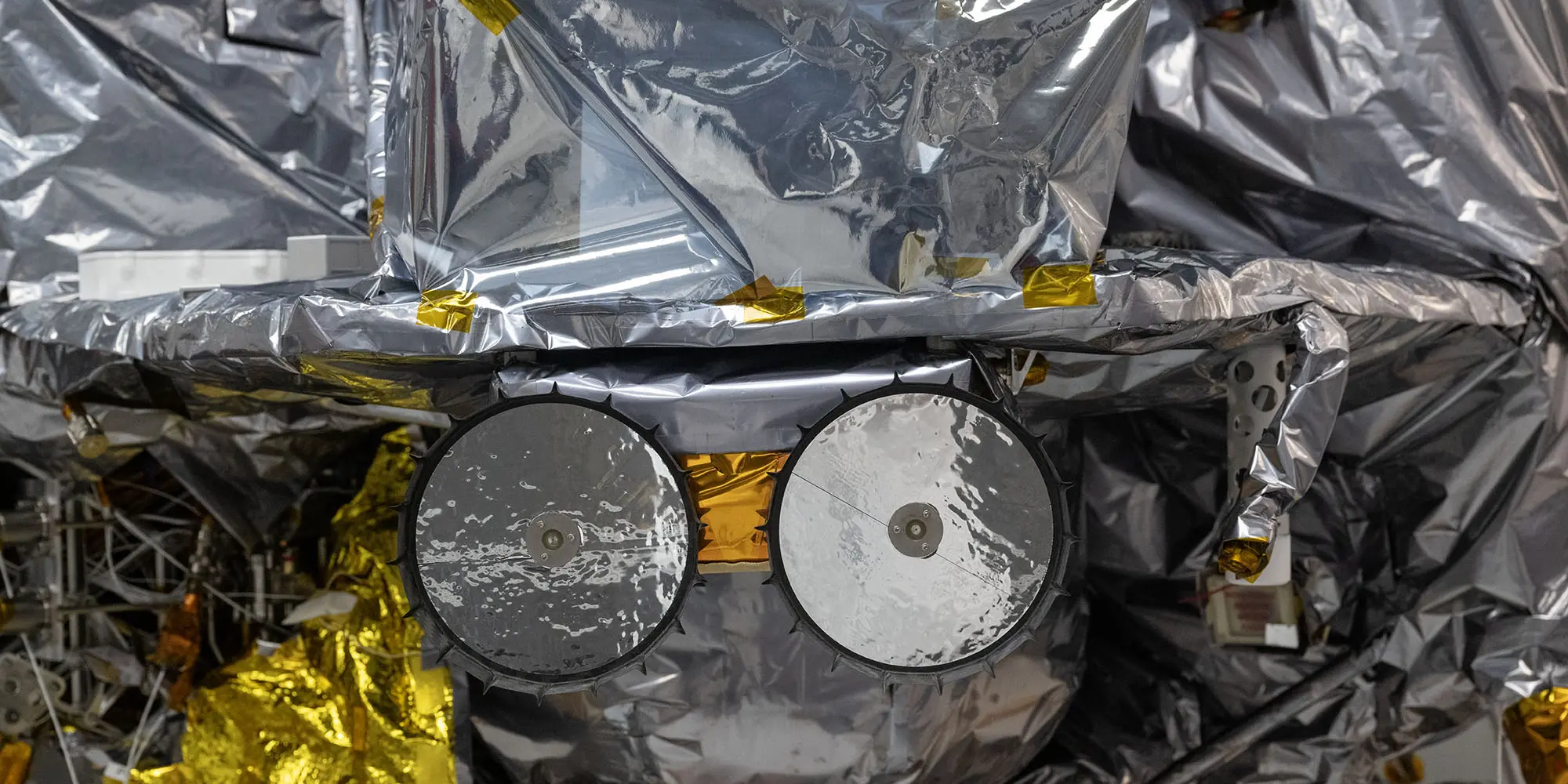
CMU’s Iris, MoonArk Leave Pittsburgh En Route to the Moon
Media Inquiries
Carnegie Mellon University has started its historic journey to the moon.
Iris(opens in new window), a tiny, lightweight lunar rover built by CMU students, and MoonArk(opens in new window), a collaborative sculpture project led by faculty, students and alumni, left Pittsburgh on Friday morning en route to their launch pad in Florida.
The projects are scheduled to launch to the moon on Sunday, Dec. 24. United Launch Alliance (ULA), whose rocket will carry the two university projects to the moon, announced the date as the earliest possible launch window for its Vulcan Centaur rocket.
“Hundreds of students put hundreds of thousands of hours into Iris, and now it’s on its way to the moon,” said Raewyn Duvall, the mission's commander and a research associate in the Robotics Institute at CMU’s School of Computer Science. “We built Iris to open up lunar and space exploration and prove that a tiny, lightweight rover built by students can succeed on the moon."
Iris and MoonArk will both travel aboard the Peregrine lunar lander(opens in new window), which will fly on the ULA rocket. The lander, designed by CMU spinoff Astrobotic(opens in new window), will carry 21 payloads including Iris, MoonArk and projects for NASA and other customers. CMU is the only university with payloads aboard the lander.
The rocket will launch from Cape Canaveral Space Force Station in Florida and its flight could take up to two months. Once Peregrine lands on the moon, Iris will deploy to the surface. The rover plans to take photos and send them back to Earth as it drives across the lunar landscape. MoonArk will stay on the lander.
Excited to have an official launch date for ULA's #VulcanRocket, which will take Iris to the moon!!! 🎉🎉🎉#space #studentbuilt #carnegiemellon #irislunarrover https://t.co/Mg7brX6ZGT
— Iris Lunar Rover (by Carnegie Mellon University) (@cmu_iris) October 24, 2023
CMU’s Iris rover — aboard the Peregrine lunar lander — is packed for transport to NASA at Astrobotic’s headquarters in Pittsburgh on Friday, Oct. 27.
The launch had been scheduled for May but was scrubbed before Iris, MoonArk and Peregrine even left Pittsburgh. On Friday, Astrobotic employees moved a wrapped and protected Peregrine lander into a shipping container and then slowly loaded it on a flatbed truck for the trip to Florida.
Members of the Iris team went to Astrobotic on Tuesday to say goodbye to the small rover. The team waved to Iris — bolted aboard Peregrine inside a clean room — from behind the glass and posed for photographs in front of a scale model of the ULA rocket, pointing to the tiny Peregrine and an even tinier Iris stashed in its nose cone.
“It was surreal,” said Nikolai Stefanov, a senior studying physics and computer science and the mission control lead. “It’s not like we’re just shipping it off somewhere. We’re sending it to the moon. The next time we see Iris, it will be on the lunar surface.”
The Iris team has kept busy waiting for the new launch dates. Many members of the team — which includes students from across the university and at every level, from undergraduate to Ph.D. — are new and had to be brought up to speed with mission simulations and training. The team spent the last several months refining mission protocols and improving the software it will use to control and monitor Iris from Carnegie Mellon Mission Control on the university’s Pittsburgh campus.
Work didn’t stop on Iris either. Although the rover was secured to Peregrine in December 2021, the team has continued to add updated software to it. On Monday, a day before the new launch date was announced, Duvall and Connor Colombo, Iris’ chief engineer and an alum who has continued to work with Iris since graduating in 2021, uploaded improved imaging and mobility software to the rover.
“We were working right up until the last possible moment to get this right,” said Colombo, who earned master's and bachelor's degrees in engineering and robotics and currently works at Astrobotic. “We only get one chance at this.”
The Iris mission ticks many "first" boxes with its trip to the moon. It will be the first American lunar rover, the first student-developed rover, the smallest and lightest rover, and the first with both a carbon fiber chassis and wheels. The Iris mission demonstrates what is possible and could chart the future of planetary exploration.
The MoonArk project will be the first museum on the moon. The 10-ounce cylinder comprises four small chambers made of titanium, platinum and sapphire that contain hundreds of images, poems, music, nano-objects, mechanisms and samples from Earth. Collectively, these items tell complex narratives integrating the arts, humanities, sciences and technology. MoonArk represents the work of 18 universities and organizations; 60 team members; and more than 250 contributing artists, designers, educators, scientists, engineers, choreographers, poets, writers and musicians.
“The MoonArk aims to direct our attention from Earth toward the moon and outward into the cosmos, leaving a trace for our future selves to discover, decode and connect back in time to humans today," said Mark Baskinger(opens in new window), director of the MoonArk project, professor and chair of Product Design(opens in new window), and director of the Joseph Ballay Center for Design Fusion(opens in new window) in the School of Design. "The triad of Peregrine, MoonArk and Iris establishes a new integrative narrative as we extend the reach and cultural imprint of humanity."
In the News
- Bloomberg: This Student-Built Rover Is Aiming for the Moon (opens in new window)
- The Weather Channel: Students Build First Ever Robotic US Moon Rover (opens in new window)
- Yahoo News: Students set to land first robotic US rover on the moon — before NASA (opens in new window)
- AOL: The First U.S. Lunar Rover is Headed to the Moon (and Students Made It!) (opens in new window)
- Fortune: A group of college students are sending a rover the size of a shoebox to the moon (opens in new window)




